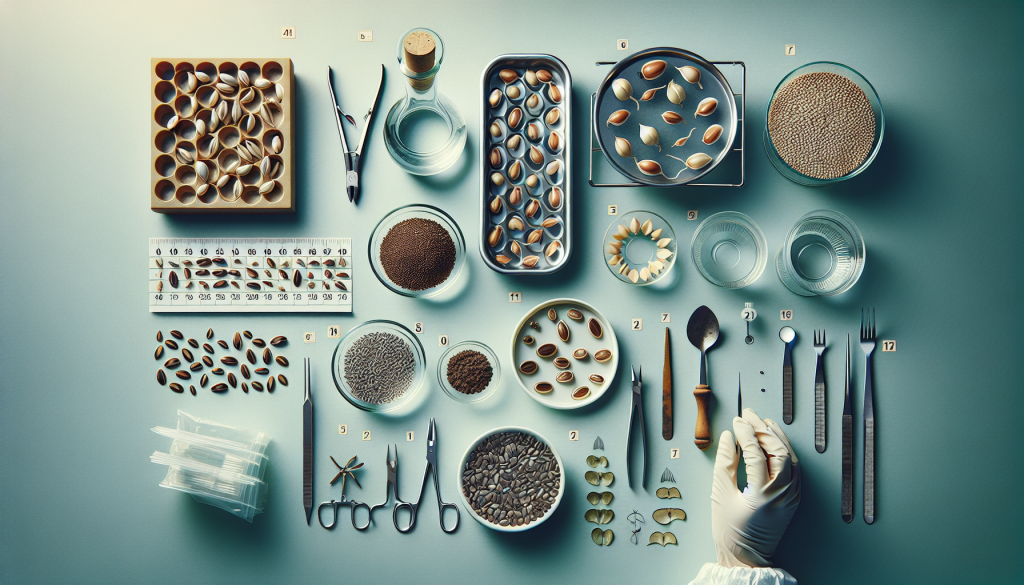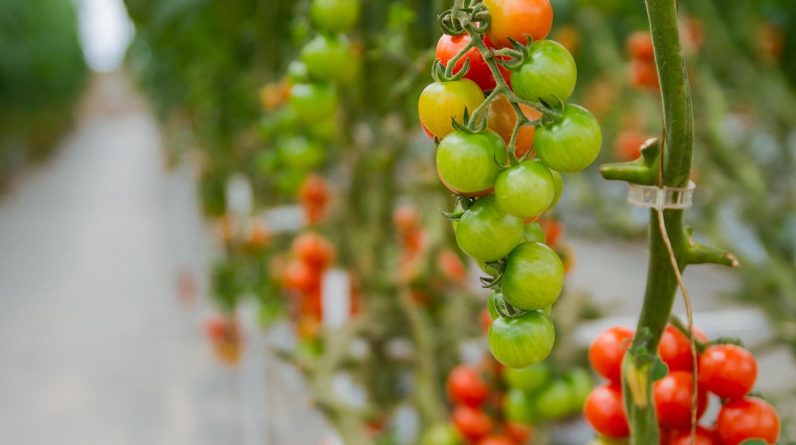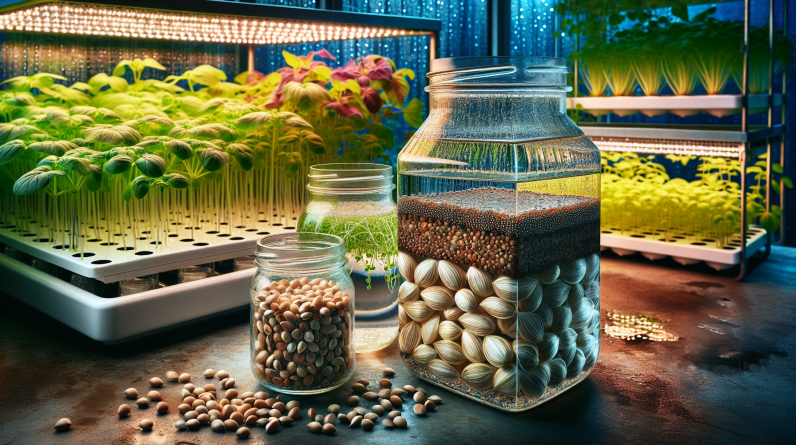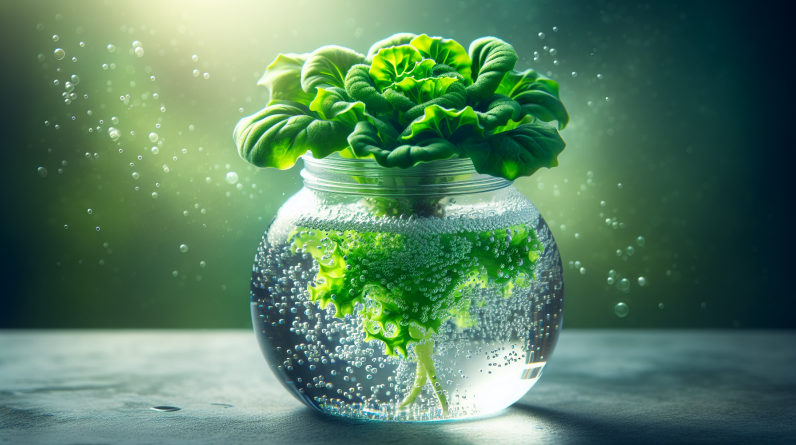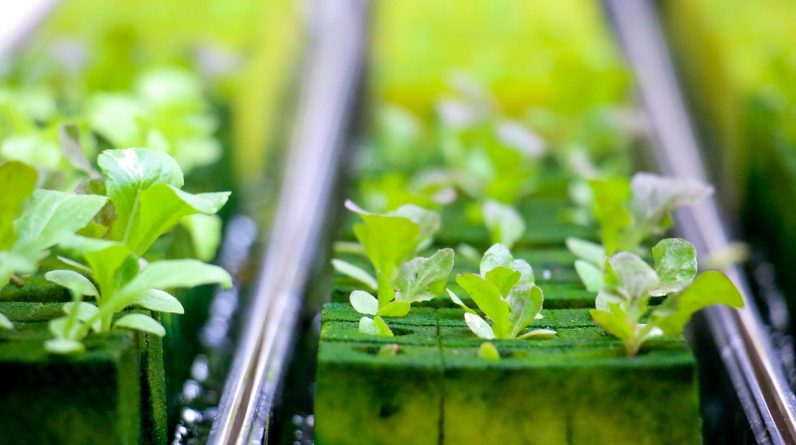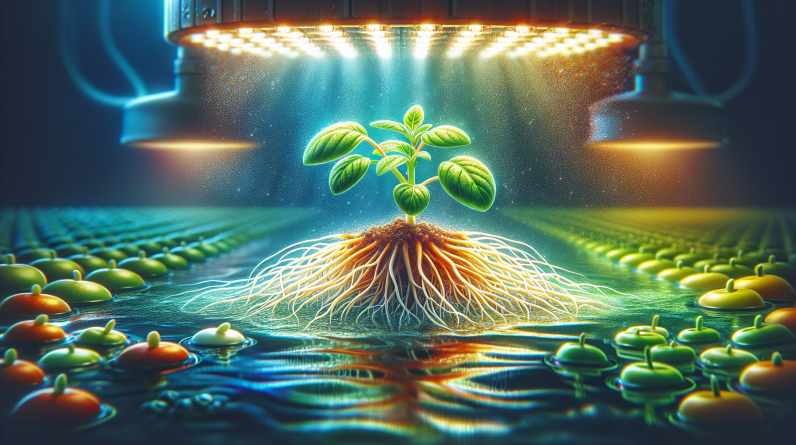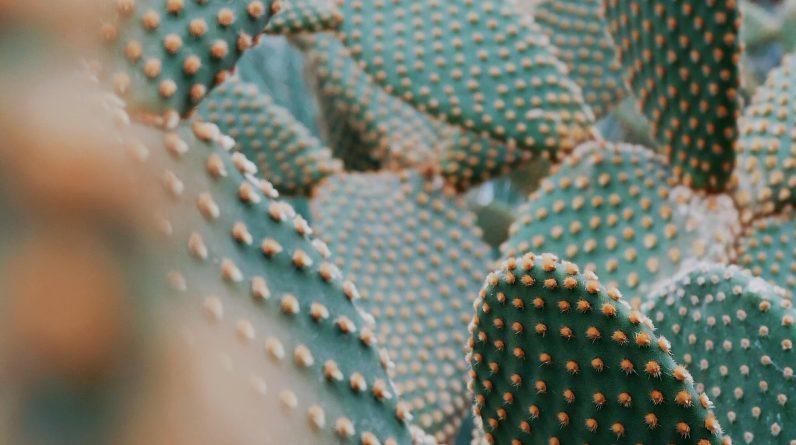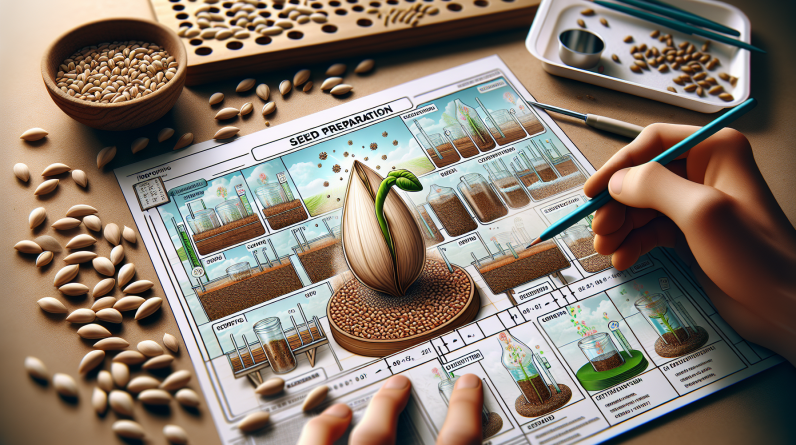
In the world of hydroponics, where plants grow without soil, the key to success begins with proper seed preparation. This article will guide you through the essential steps, helping you unlock the secrets to successfully preparing seeds for hydroponic gardening. From soaking and sterilizing to selecting the right mediums, you’ll discover the best practices to ensure your seeds thrive in their new water-based environment. So, whether you’re a beginner or an experienced hydroponics enthusiast, get ready to delve into the fascinating world of seed preparation for hydroponics.
Choosing the Right Seeds
When it comes to hydroponic gardening, selecting the right seeds is crucial for a successful and thriving garden. High-quality seeds will not only ensure healthy growth but also increase the likelihood of a bountiful harvest. To choose the right seeds for your hydroponic system, consider the following factors:
Selecting High-Quality Seeds
Look for seeds that are specifically labeled for hydroponic gardening. These seeds are often disease-resistant, ensuring a higher success rate in a controlled environment. It’s also advisable to choose seeds from reputable suppliers who specialize in hydroponic gardening. This will ensure that the seeds you purchase have been tested and are of high quality.
Determining the Suitable Crop
Consider the type of crop you wish to grow in your hydroponic system. Different plants have different requirements, such as nutrient levels, pH balance, and lighting needs. Research the optimal conditions for the specific plant you want to grow and choose seeds accordingly. Some popular crops for hydroponics include lettuce, herbs, tomatoes, and strawberries.
Seed Cleaning and Treatment
Before you start germinating your seeds, it’s important to clean and treat them properly. This step helps to remove any debris or plant material that may impede germination and prevents the spread of diseases. Here’s what you need to do:
Removing Debris and Plant Material
Inspect the seeds carefully and remove any foreign materials, such as pieces of plant stems or chaff. You can use a fine sieve or a mesh screen to separate the seeds from unwanted debris. Gently shake the seeds in the sieve or screen, allowing the smaller particles to fall through while keeping the seeds intact.
Treating Seeds with a Fungicide Solution
To prevent fungal infections that can harm your seeds, it’s advisable to treat them with a fungicide solution. Follow the instructions provided by the manufacturer and soak the seeds in the solution for the recommended time. This will help protect the seeds from potential diseases while they germinate.

This image is property of images.pexels.com.
Seed Germination
Seed germination is a critical stage in hydroponic gardening. It involves the process of getting seeds to sprout and develop into seedlings. Here are two essential steps to ensure successful seed germination:
Soaking Seeds in Water
Before planting your seeds, soak them in water for a specific period. This encourages hydration and triggers germination. The duration of soaking varies depending on the type of seed, so make sure to refer to the seed package or do some research to determine the appropriate soaking time.
Performing a Seed Viability Test
To increase the chances of successful germination, it’s wise to perform a seed viability test. This test helps you determine if the seeds are still capable of germination. Place a sample of seeds on a moist paper towel or cotton pad, and then seal them in a plastic bag. Leave the bag in a warm and dark location for a few days. If most of the seeds sprout, then they are viable and ready for germination.
Preparing the Growing Medium
The growing medium plays a crucial role in hydroponic gardening as it acts as a substitute for soil. It provides support to the plants and holds the necessary moisture and nutrients. Here’s how you prepare the growing medium for your hydroponic system:
Choosing the Appropriate Growing Medium
There are various options available for growing mediums in hydroponics, such as perlite, vermiculite, coconut coir, and Rockwool. Each growing medium has its own advantages and considerations. Research the specific requirements of your chosen crop to determine the most suitable growing medium. Consider factors such as moisture retention, pH stability, and root support.
Sterilizing the Growing Medium
To ensure a clean and disease-free environment for your plants, it’s important to sterilize the growing medium. This process eliminates any potential pathogens or pests that could harm your crops. You can sterilize the growing medium by baking it in an oven or using a commercial sterilizing solution. Follow the manufacturer’s instructions or refer to reputable hydroponic gardening resources for specific guidelines.

This image is property of images.pexels.com.
Seed Sowing or Transplanting
Once your seeds have germinated and your growing medium is prepared, it’s time to sow the seeds or transplant the germinated seedlings into your hydroponic system. Depending on your preference and the type of crop, you can choose between the following methods:
Sowing Seeds Directly in the Growing Medium
For certain crops, such as lettuce or herbs, it’s common to sow the seeds directly into the growing medium. Make small holes in the growing medium and place a few seeds in each hole. Ensure the seeds are lightly covered with the growing medium. This method allows the seeds to establish their root systems directly in the hydroponic system.
Transplanting Germinated Seeds
In the case of crops that require an earlier start or have a longer germination period, you can germinate the seeds separately and then transplant the seedlings into the hydroponic system. Gently remove the germinated seedlings from their germination medium, such as a germination tray, and carefully place them into the growing medium of your hydroponic system. Be mindful not to damage the delicate roots during the transplantation process.
Controlling the Hydroponic Environment
Maintaining optimal environmental conditions is essential for the health and growth of your hydroponic crops. Pay close attention to the following factors:
Maintaining Temperature and Humidity
Different crops have varying temperature and humidity requirements. Ensure that your hydroponic system is set up in an area where you can control these factors effectively. Use a thermometer and a hygrometer to monitor the temperature and humidity levels regularly. Adjust the environmental conditions as needed to create an ideal growing environment for your plants.
Ensuring Sufficient Lighting
Proper lighting is crucial for photosynthesis, which is essential for plant growth. Different crops have different lighting needs, so research the light requirements of your chosen plants. Consider using artificial grow lights, such as LED or fluorescent lights, to provide the adequate light intensity and spectrum. Position the lights at an appropriate distance from the plants to avoid any light burn or insufficient lighting.

This image is property of images.pexels.com.
Providing Nutrient Solution
In a hydroponic system, plants receive their nutrients directly from the nutrient solution, as there is no soil to extract nutrients from. Ensuring a properly balanced and suitable nutrient solution for your plants is crucial. Follow these steps to prepare and maintain the nutrient solution:
Preparing the Nutrient Solution
Research the specific nutrient requirements of your chosen crop and prepare the nutrient solution accordingly. Use a quality hydroponic nutrient mix that provides the necessary macronutrients and micronutrients. Measure the nutrients accurately according to the instructions provided by the manufacturer. Regularly monitor and adjust the nutrient solution to maintain the appropriate nutrient levels as the plants grow.
Monitoring and Adjusting Nutrient Levels
Regularly monitor the pH and electrical conductivity (EC) levels of the nutrient solution. The pH level should be within the optimal range for your chosen crop, usually between 5.5 and 6.5. Use pH testing kits or pH meters to measure and adjust the pH level as needed. The EC level indicates the concentration of nutrients in the solution. Adjust the EC level by adding or diluting the nutrient solution to ensure it remains within the desired range for your plants.
Watering and Oxygenation
Proper watering and oxygenation are essential to maintain a healthy root system in hydroponic gardening. Follow these guidelines to ensure adequate moisture and oxygen levels for your plants:
Implementing a Watering Schedule
Determine a watering schedule based on the specific water requirements of your plants. Hydroponic systems generally require frequent watering to ensure the growing medium remains moist. Monitor the moisture levels regularly and adjust the watering schedule accordingly. Avoid overwatering, as it can lead to root rot and other problems. Strive for a balance between keeping the roots hydrated and allowing them sufficient access to oxygen.
Ensuring Adequate Oxygen Supply
In hydroponics, plants rely on the oxygen supply provided through the nutrient solution. Ensure proper oxygenation by using an air pump and air stones or diffusers within your hydroponic system. These components help oxygenate the nutrient solution and provide oxygen to the plant roots. Regularly check and clean the air pump and air stones to ensure optimal performance.

Protecting Seeds and Young Plants
Pests and diseases can quickly damage or destroy your hydroponic crops. Implementing pest and disease control measures is vital to protect your seeds and young plants. Here’s what you can do:
Implementing Pest and Disease Control Measures
Regularly inspect your plants for any signs of pests or diseases. If detected, take immediate action to prevent further spread. Incorporate preventive measures such as using insect nets, introducing beneficial insects, and practicing proper cleanliness and hygiene within your hydroponic system. Apply organic or appropriate chemical treatments to control pests and diseases if necessary, ensuring they are safe for hydroponic use.
Monitoring and Maintaining an Ideal pH Level
Maintaining the correct pH level is crucial to prevent nutrient deficiencies or toxicities. Regularly test the pH level of your nutrient solution and adjust it as necessary to keep it within the optimal range for your chosen crops. Fluctuations or imbalances in pH can cause nutrient uptake issues and negatively impact plant health. Use pH buffers or pH adjustment substances to maintain a stable pH level.
Transferring to the Hydroponic System
Once your seeds have germinated, and the seedlings are robust enough, it’s time to transfer them to your hydroponic system. Carefully follow these steps to ensure a successful transition:
Preparing the Hydroponic System
Make sure your hydroponic system is clean, disinfected, and ready to receive the plants. Ensure the nutrient solution is properly prepared and adjusted before transferring the seedlings. Check that all necessary components, such as pumps and timers, are functioning correctly to provide the required irrigation and aeration.
Transferring Seeds or Plants to the System
Gently remove the seedlings from their germination medium or growing trays, ensuring you don’t damage the roots. Place the seedlings into the designated spots or holes in your hydroponic system. Carefully cover the roots with the growing medium, providing support to anchor the plants in place. Ensure there is sufficient contact between the roots and the nutrient solution for the plants to establish themselves in the hydroponic system.
By following these steps, you will be well on your way to preparing your seeds for hydroponics and creating a thriving and productive hydroponic garden. Remember to research and adapt these guidelines to suit the specific requirements of your chosen crops, and don’t hesitate to seek advice from experienced hydroponic gardeners. Happy growing!
